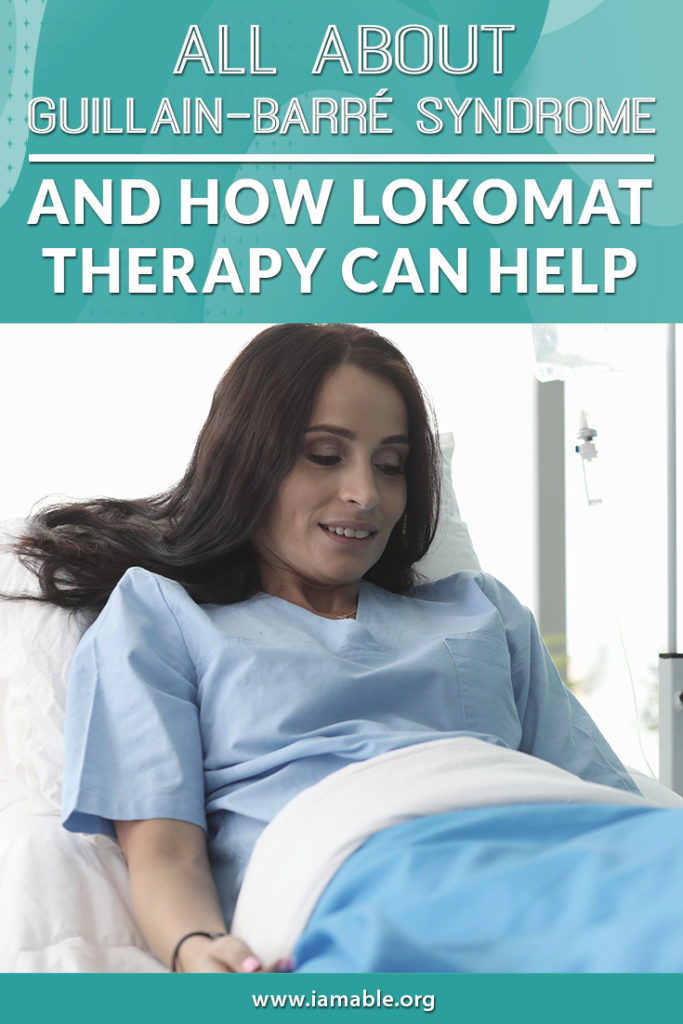Miami, FL 33186

What is Guillain-Barré Syndrome (GBS)? It is a rare autoimmune condition in which the body’s immune system attacks its own nerves. The nerves that are most likely to experience the attack are those connecting the primary components of the central nervous system (the brain and spinal cord) with the rest of the body. Therefore, GBS can cause acute paralysis. That is why we are going to look at how Lokomat therapy and other forms of treatment can provide assistance. But first, more on what GBS is and what it does to the body.
How rare is Guillain-Barré syndrome? According to estimates, only about 1 to 3 people out of every 100,000 will get it. That means this condition affects less than one one-hundredth of a percent of adults and children. So how does it happen?
There is no one underlying cause of GBS that is presently known. However, there are some common factors among patients. Within three weeks of diagnosis, it is normal for patients to have some type of infection before experiencing Guillain-Barré symptoms. Other factors that researchers theorize could relate to the onset of Guillain-Barré Syndrome include surgery, certain medications, or viruses.
Now it is essential to understand what Guillain-Barré Syndrome does to a person.
The first symptom of GBS that usually sends a person to the doctor to find out what is wrong is a tingling sensation in the legs. This feeling gradually spreads until the entire body may experience a tingling feeling. From there, other symptoms may set in that could potentially include:
Other complications can arise depending on the extent of the paralysis. These might include bedsores, blood clotting, and issues with bladder and bowel control.
While the symptoms of GBS can make it terrifying, the good news is that the majority of people will make a complete recovery. However, some patients could continue to have issues with lingering fatigue, weakness, or numbness. It is less common but possible for a patient to experience permanent paralysis. On the other hand, without any treatment, GBS can result in death.
A good indicator of recovery is the rapidity of symptom onset. When symptoms come on gradually, healing often occurs rather quickly. Unfortunately, when symptoms arise and progress rapidly, that indicates a patient is in for a much longer recovery. The progressive phase of the disease can last anywhere from a few days up to a whole month.
Either way, specialized care is needed. Usually, there is a measure of acute treatment in a hospital, followed by rehabilitation in an outpatient facility. Let’s discuss some of the therapies that can help a Guillain-Barré Syndrome patient to recovery as thoroughly and quickly as possible.
Initially, acute treatment may take place in a hospital environment. This is especially true if the onset of symptoms is very rapid or if the condition progresses into its later stages without care. Immunotherapy seems to help push patients from the progress phase into the plateau or recovery phases faster. Corticosteroids are also sometimes used.
If oxygen levels drop too low as a result of GBS affecting the patient’s ability to breathe, mechanical ventilation may be a necessity for a time. About one in four GBS patients will require at least some time on a ventilator. However, immunotherapy treatments seem to cut the duration of ventilation in half.
Pain management is vital with GBS, especially once the recovery phase begins. Physical therapy can actually help reduce pain. Gentle massage, frequently changing of position to avoid bedsores, and range of motion exercises are all useful. When considering your physical and occupational therapy programs, pain management should be a consideration. Let’s consider the role of physical, occupational, and gait therapy in recovery.
Once you are out of the hospital, outpatient therapy will help you to continue your recovery until you are, hopefully, back to 100%. Here are a few types of treatment to look for in an outpatient facility.
It is crucial to remain focused on your end goal when recovering from paralysis. The eBook 7 Unbelievably Important Steps to Take to Thrive after Paralysis can help get you into the right mindset for recovery. iAM ABLE is proud to offer this helpful publication as well as our state of the art facility in southern Florida to help Guillain-Barré Syndrome patients make a full recovery.
Grab our free e-book 7 Unbelievably Important Steps to Take to THRIVE after Paralysis by clicking the image below.
